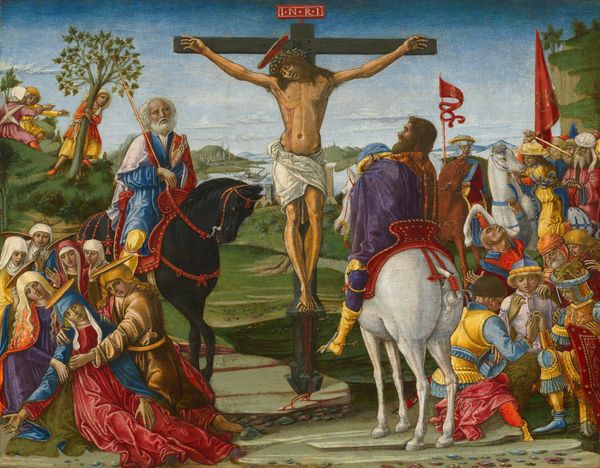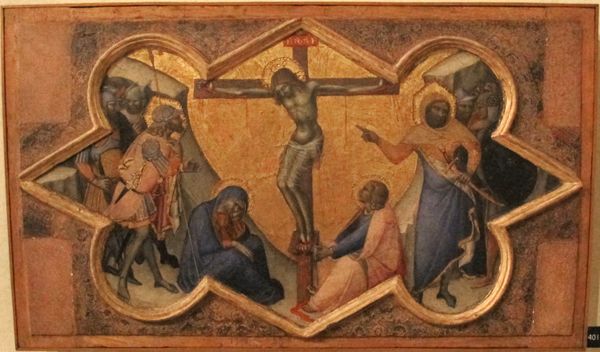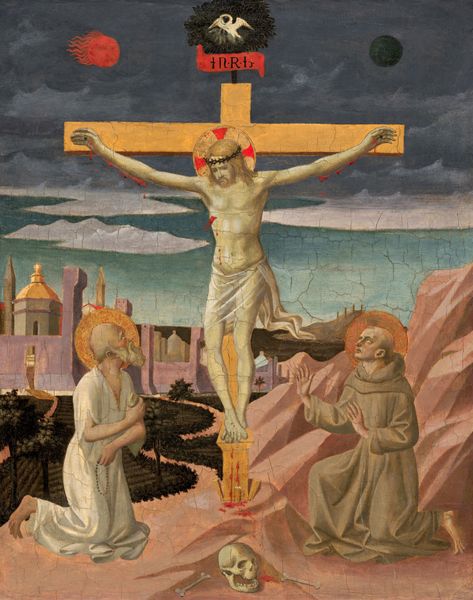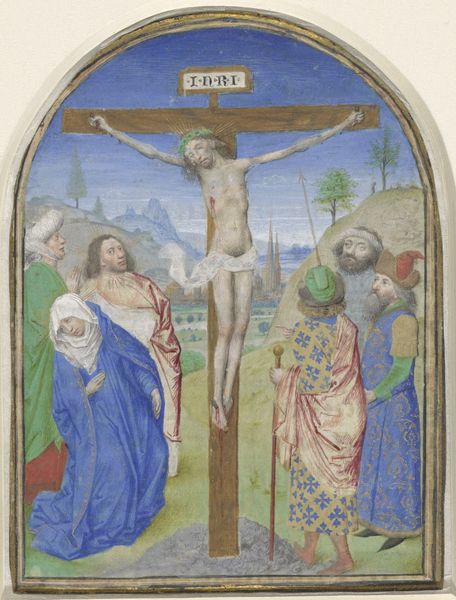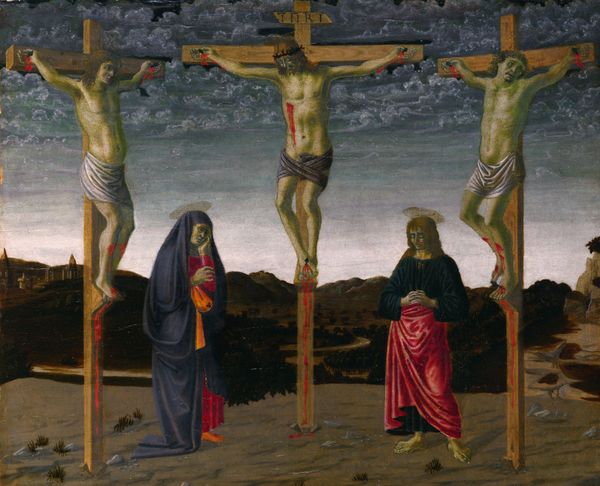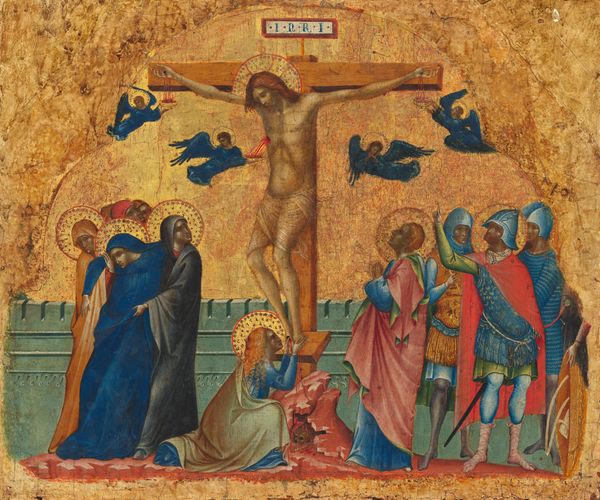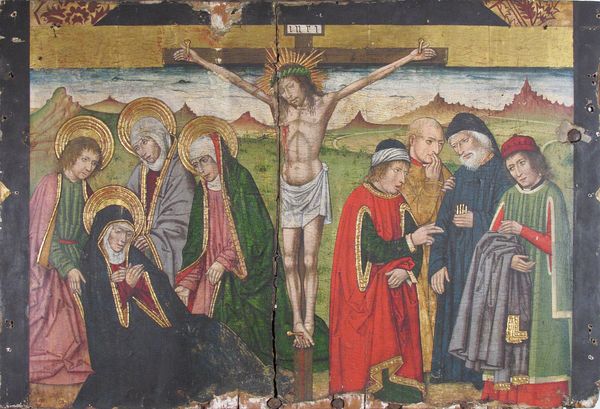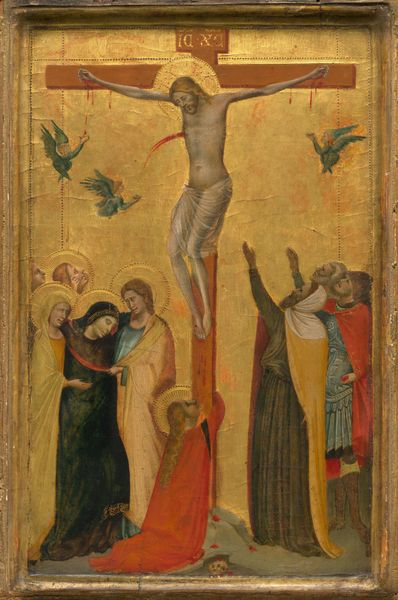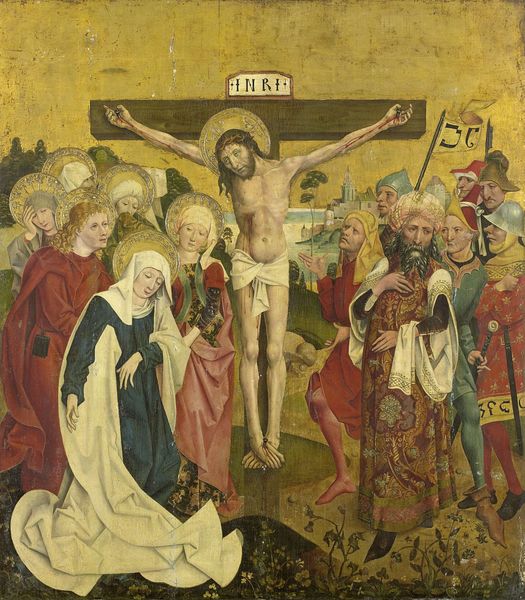
panel, tempera, painting, oil-paint
#
portrait
#
panel
#
allegory
#
tempera
#
painting
#
oil-paint
#
painted
#
figuration
#
oil painting
#
history-painting
#
italian-renaissance
#
early-renaissance
#
realism
Dimensions: height 29 cm, width 62 cm
Copyright: Rijks Museum: Open Domain
Giovanni di Paolo painted this small panel, The Crucifixion, in the first half of the fifteenth century. The entire pictorial space is filled with figures, all pressed against a shimmering gold background. The eye is drawn not just to the suffering body of Christ but also to the patterning of the crowd. Di Paolo's formalism is intriguing: he’s less interested in realism and more interested in the visual syntax. The semiotics of color, the flattened space, and the use of line invite us to decode the painting's message. The almost decorative landscape flattens the space and renders it abstract. Figures are distinguished by color, and this color is not mimetic. The unnaturalistic colors have symbolic weight, drawing attention to the artwork’s compositional elements. Note the artist's structural method of composition, which creates a symbolic rather than realistic space. It’s a space where color and form communicate ideas, rather than merely representing reality. This painting invites ongoing interpretation and reinvestigation, allowing us to appreciate the fusion of aesthetics and cultural narrative.
Comments
rijksmuseum about 2 years ago
⋮
The taste for delicate, subtly coloured scenes set against gold backgrounds lasted longer in Siena than in Florence. This work – remarkable for the dramatic isolation of the crucified Christ between his followers (at right) and his persecutors (at left) – was probably the middle in a series of predella panels of the Passion of Christ placed beneath a large altarpiece.
Join the conversation
Join millions of artists and users on Artera today and experience the ultimate creative platform.
